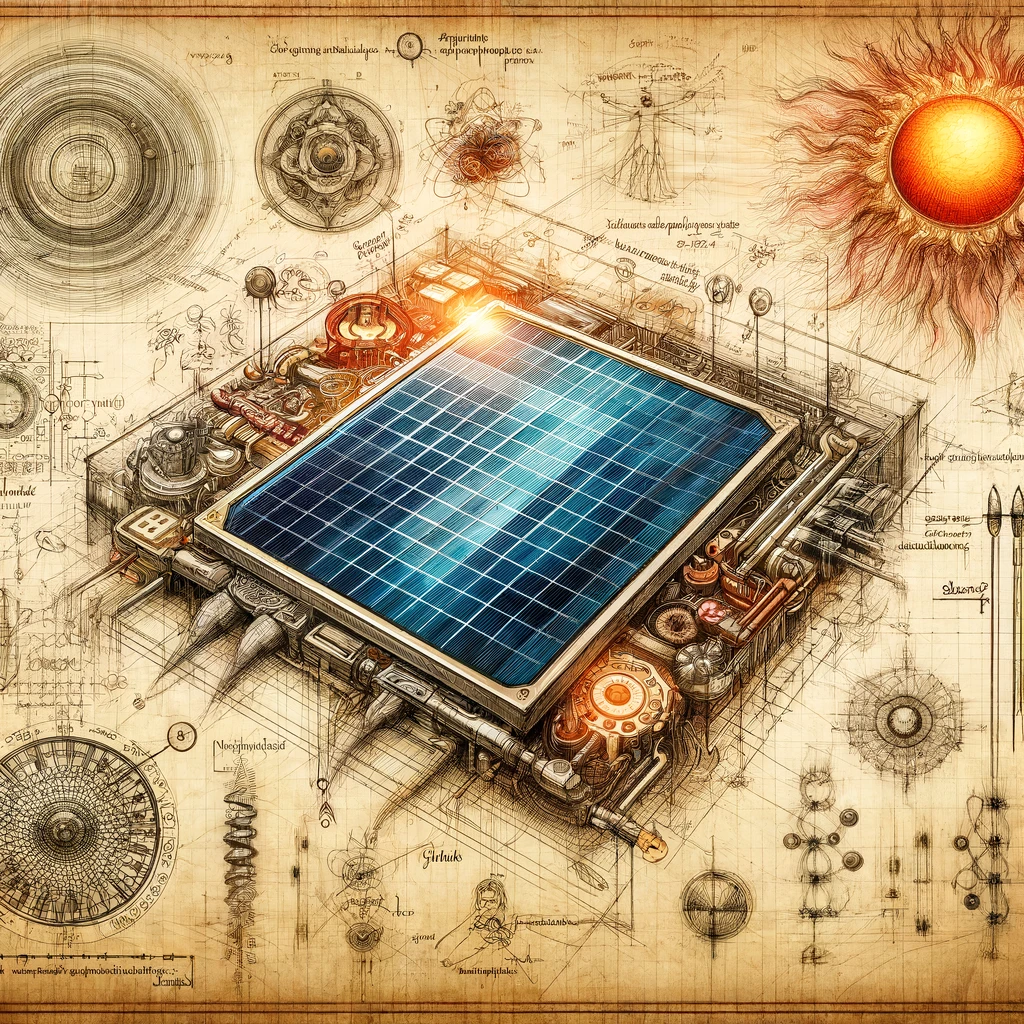
- Published on
- Authors

- Name
- ric de yuga 😄
How Quantum Computers Can Lead To Greener Energy
The field of solar energy is constantly evolving, with researchers seeking new ways to improve the efficiency and cost-effectiveness of solar cells. One of the most promising developments in recent years has been the concept of AC solar cells, which aim to capture the sun's natural AC energy directly, eliminating the need for DC to AC conversion. However, designing these cells for optimal performance is a complex task that requires advanced computational tools. This is where quantum computers come into play, offering unprecedented computational power to simulate and optimize solar cell designs.
The Power of Quantum Computing
Quantum computers harness the principles of quantum mechanics to perform complex calculations that are beyond the capabilities of classical computers. By leveraging phenomena such as superposition and entanglement, quantum computers can explore vast computational spaces and solve problems that are intractable for traditional computing systems.
In the context of solar cell design, quantum computers can:
Simulate Complex Materials: Quantum computers can accurately simulate the behavior of complex materials at the atomic and molecular level, allowing researchers to explore new materials with desirable properties for solar energy conversion.
Optimize Device Configurations: By running quantum algorithms, researchers can optimize the configuration of solar cells, including the arrangement of layers, doping levels, and geometries, to maximize energy conversion efficiency.
Accelerate Discovery: Quantum computers can significantly speed up the process of discovering new materials and designs for solar cells, reducing the time and cost associated with experimental trials.
Quantum Simulations for AC Solar Cell Design
One of the key challenges in developing AC solar cells is designing materials and structures that can efficiently capture and convert the sun's oscillating energy. Quantum simulations can play a crucial role in this process by:
Modeling Photonic Crystals: Quantum computers can simulate the behavior of photonic crystals, which are essential components of AC solar cells. By optimizing the band gap structures and geometries of these crystals, researchers can enhance the direct AC generation from sunlight.
Simulating Wave-Matter Interactions: Quantum simulations can model the interaction between electromagnetic waves and matter at the quantum level, providing insights into how materials respond to the oscillating nature of sunlight. This can help in designing materials with specific dielectric and magnetic properties that favor AC electricity generation.
Optimizing Device Architectures: Quantum algorithms can be used to optimize the overall architecture of AC solar cells, considering factors such as layer thicknesses, material compositions, and electrode configurations. By exploring a vast design space, quantum computers can identify the most promising configurations for maximizing energy conversion efficiency.
Overcoming Challenges and Future Prospects
While quantum computing offers immense potential for solar cell design, there are still challenges to overcome:
Quantum Hardware Development: The development of reliable and scalable quantum computing hardware is ongoing, I propose we use plants abilities to convert photons to energy and mimic their processes to improve effiency. Leading to better Solar Cell Designs & Potential Biological Quantum Computers (Other Than Your Brain)
Algorithm Design: Designing efficient quantum algorithms for solar cell simulations requires expertise in both quantum computing and materials science. Collaboration between these fields is crucial for developing effective simulation tools.
Experimental Validation: Quantum simulations must be validated against experimental results to ensure their accuracy and reliability. Close collaboration between computational and experimental researchers is essential for refining simulation models and translating them into practical solar cell designs.
Despite these challenges, the future prospects for quantum computing in solar cell design are promising. As quantum technologies continue to advance, we can expect more powerful simulations and optimizations that will drive the development of high-efficiency AC solar cells. This, in turn, will contribute to the transition towards clean, sustainable energy sources and the mitigation of climate change.
Conclusion
Quantum computing has the potential to revolutionize the design and optimization of solar cells, particularly in the development of AC solar cells. By leveraging the power of quantum simulations, researchers can explore new materials and configurations to maximize solar energy conversion efficiency. While challenges remain, the combination of quantum computing and solar energy research holds great promise for a sustainable energy future.
As the famous physicist Richard Feynman once said, "Nature isn't classical, dammit, and if you want to make a simulation of nature, you'd better make it quantum mechanical." This quote perfectly captures the essence of why quantum computing is crucial for advancing solar cell technology and pushing the boundaries of clean energy innovation.
For more information on the quantum aspects of solar energy and photosynthesis, check out our previous blog post: Quantum Photosynthesis: Harnessing Nature's Solar Power
And
